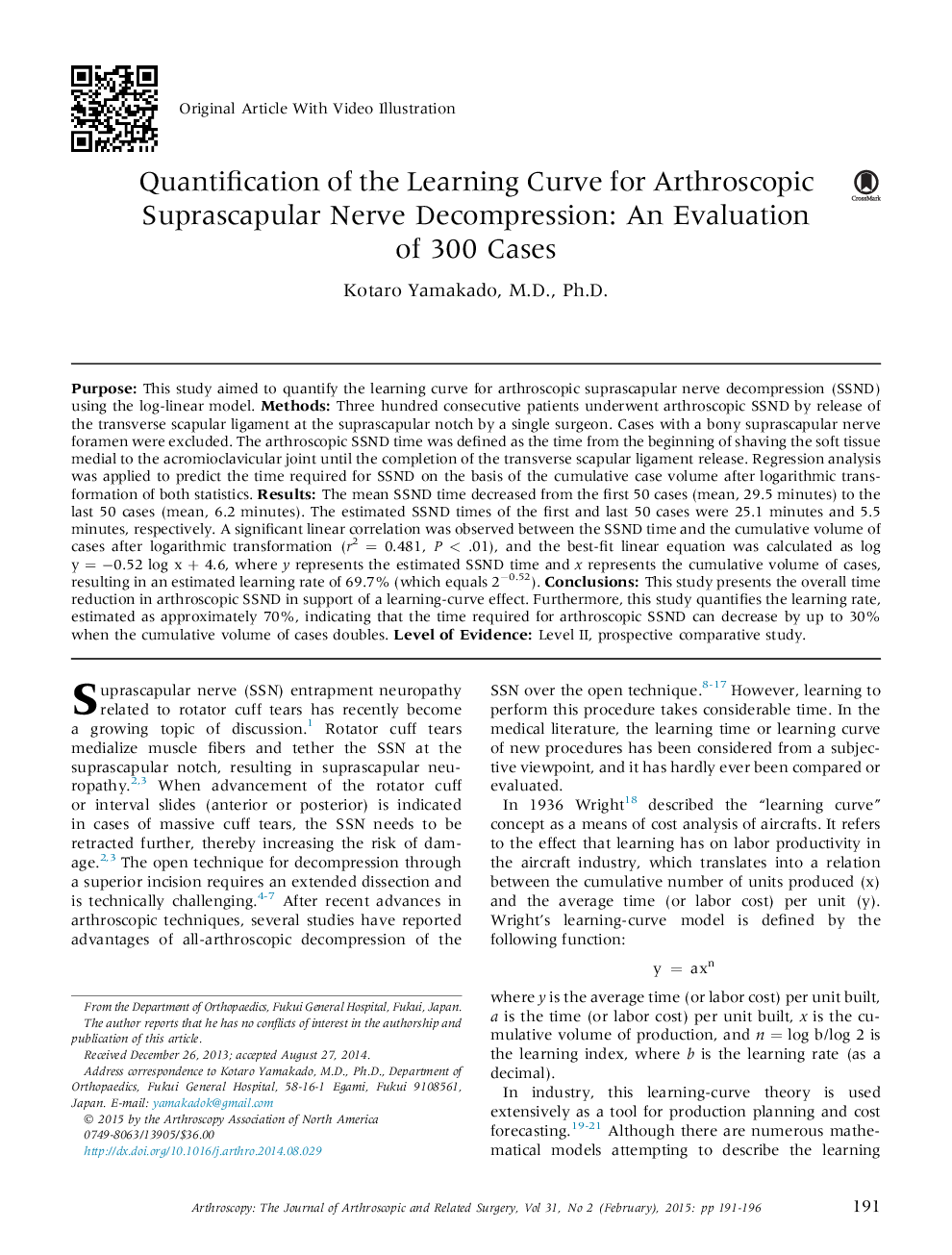| Article ID | Journal | Published Year | Pages | File Type |
|---|---|---|---|---|
| 4042460 | Arthroscopy: The Journal of Arthroscopic & Related Surgery | 2015 | 6 Pages |
PurposeThis study aimed to quantify the learning curve for arthroscopic suprascapular nerve decompression (SSND) using the log-linear model.MethodsThree hundred consecutive patients underwent arthroscopic SSND by release of the transverse scapular ligament at the suprascapular notch by a single surgeon. Cases with a bony suprascapular nerve foramen were excluded. The arthroscopic SSND time was defined as the time from the beginning of shaving the soft tissue medial to the acromioclavicular joint until the completion of the transverse scapular ligament release. Regression analysis was applied to predict the time required for SSND on the basis of the cumulative case volume after logarithmic transformation of both statistics.ResultsThe mean SSND time decreased from the first 50 cases (mean, 29.5 minutes) to the last 50 cases (mean, 6.2 minutes). The estimated SSND times of the first and last 50 cases were 25.1 minutes and 5.5 minutes, respectively. A significant linear correlation was observed between the SSND time and the cumulative volume of cases after logarithmic transformation (r2 = 0.481, P < .01), and the best-fit linear equation was calculated as log y = −0.52 log x + 4.6, where y represents the estimated SSND time and x represents the cumulative volume of cases, resulting in an estimated learning rate of 69.7% (which equals 2−0.52).ConclusionsThis study presents the overall time reduction in arthroscopic SSND in support of a learning-curve effect. Furthermore, this study quantifies the learning rate, estimated as approximately 70%, indicating that the time required for arthroscopic SSND can decrease by up to 30% when the cumulative volume of cases doubles.Level of EvidenceLevel II, prospective comparative study.
